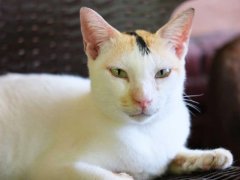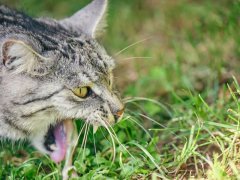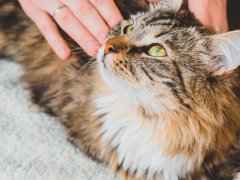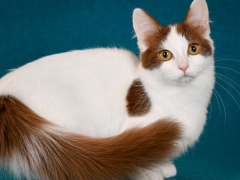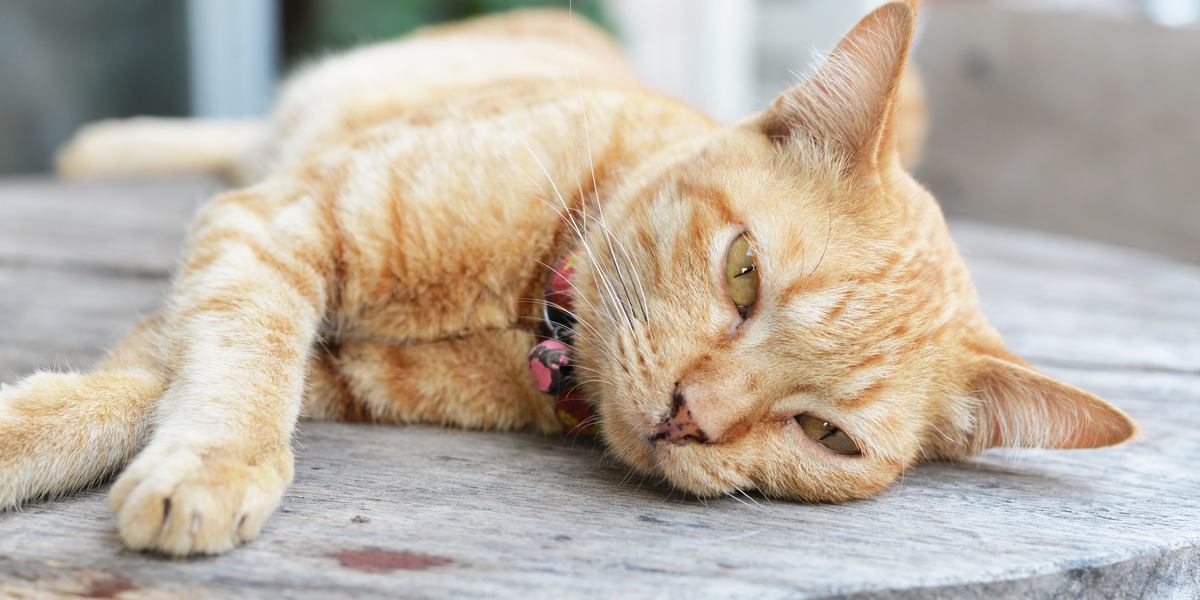
While most pet owners can recognize the obvious signs of sickness in cats, including vomiting, diarrhea, or runny eyes, you may not know the more subtle signs that cats express when they aren’t feeling well.
This is because, in nature, cats are a predator of small animals, but they are also prey to animals like coyotes. Therefore, to keep themselves safe, they tend to hide any signs of sickness. This can make it harder to know when your cat needs help.
All cat owners need to know the subtle signs that their cat might be sick and needs to see the vet. Here are the top ten subtle signs of sickness in cats.
1. Your Cat Is Hiding More Than Usual
Remember when I said that cats in the wild are both predator and prey? It follows that if a cat is sick, they don’t want anybody to know that, and they have the instinct to hide and protect themselves.
One of the signs that your cat may be sick is just that you see less of your cat than usual, or you find your cat suddenly hiding under your bed or in the closet or being less social than normal.
2. Your Cat Has a Prolapsed Third Eyelid
Did you know that your cat has three eyelids? It’s true! Cats have two eyelids just like humans, and then they have a third protective eyelid called the nictitans or nictitating membrane that is pink in color and normally hangs out in the lower inner corner of the eye socket.
You might be able to see it when your cat is sleeping heavily. The third eyelid also creeps up when a cat is feeling sick, and will hang out halfway, covering half the eye.
If you notice that you are seeing your cat’s third eyelid more often or when the cat is awake, or if the third eyelid is red or swollen, it is a sign your cat is sick.
3. Your Cat Is Not Jumping or Climbing Stairs
Cats are natural athletes and love to jump and climb and be in high spaces. When a cat stops jumping that is a sign that something is going on. The most common reason cats stop jumping is joint pain due to arthritis.
Arthritis is very common in older cats, we just don’t tend to recognize the signs. Cats don’t tend to limp or cry when they are experiencing joint pain, they just stop jumping and climbing, and they sleep more.
If you are noticing that your previously active cat who loved running, jumping, and playing has stopped engaging in those activities and instead is just walking around, or if you notice your cat is hesitant to go up or down stairs, your cat could be experiencing pain from arthritis.
4. Your Cat Has a Picky Appetite
We all know cats can be picky about what they eat. If your cat has been a picky eater their whole life and you’ve had it checked out by a vet, it’s probably not a sign of sickness in your cat. However, if your cat previously had a good appetite and has suddenly turned up their nose at their food, there is likely a problem either with the food or your cat.
It is VERY important to get your vet involved if your cat hasn’t eaten for 48 hours because when cats don’t eat for several days they will develop a life-threatening liver problem called hepatic lipidosis. If your cat stops eating for more than a day, or if your cat decreases the amount they are eating over several days, call your vet and have your cat seen.
5. Your Cat Suddenly Develops a Voracious Appetite
So I know I just said that if a cat stops eating it is a sign of sickness, but the opposite is true as well! Several conditions in cats, including diabetes mellitus, hyperthyroidism, and Cushing’s syndrome can cause an increase in a cat’s appetite.
If your cat suddenly is eating more and is thin or losing weight this is definitely a sign that your cat needs veterinary attention.
6. Your Cat Is Losing Weight
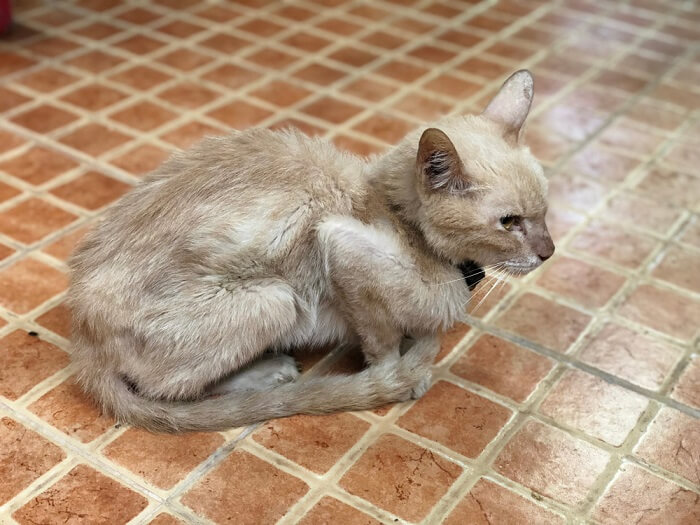
A cat who’s suddenly losing a lot of weight is most likely dealing with some kind of health problem.
Unexpected weight loss in a cat is caused by not eating enough calories or burning calories too fast. Cats may not eat enough if they are stressed, in pain for any reason including dental disease, or if they are nauseous.
This can happen with many conditions, including kidney disease, urinary tract inflammation, or pancreatitis. Alternatively, cats may be eating enough, but they may be losing calories to diseases such as intestinal parasites, cancer, or diarrhea. Don’t know if your cat is too thin?
You can use the hand test to find out or try our healthy weight calculator.
Concerned that your cat’s weight loss might be related to kidney disease? Kidney-Chek, a simple saliva test, can help you assess your cat’s kidney function in just two minutes.
7. Your Cat Is Drinking a Lot and Peeing a Lot
Several conditions, including kidney disease, diabetes mellitus, and Cushing’s syndrome will cause a cat to drink a lot and pee a lot.
If your cat is suddenly hanging out at the water bowl a lot, draining the bowl more quickly, making more frequent trips to the litterbox, or making lakes in the litterbox, then that is likely a sign that your cat is sick.
Try to bring a urine sample with you to the veterinary hospital so the staff can test the urine for disease conditions.
8. Your Cat Is Peeing And/or Pooping Outside the Litterbox
Time to dispel a myth! Cats are not being spiteful when they urinate or defecate on your bed/laundry/throw rug/insert whatever else they might be using as their personal toilet. When cats do this it is a sign that they need HELP.
Also Read: 6 Common Reasons Why Cats Pee Outside The Litter Box
Going outside the litterbox is called inappropriate elimination, and it is a sign that there is something not right with your cat. Stress from any cause, including pain and gastrointestinal and urinary disorders, are often a cause of inappropriate elimination.
9. Your Cat Has a Greasy or Matted Haircoat
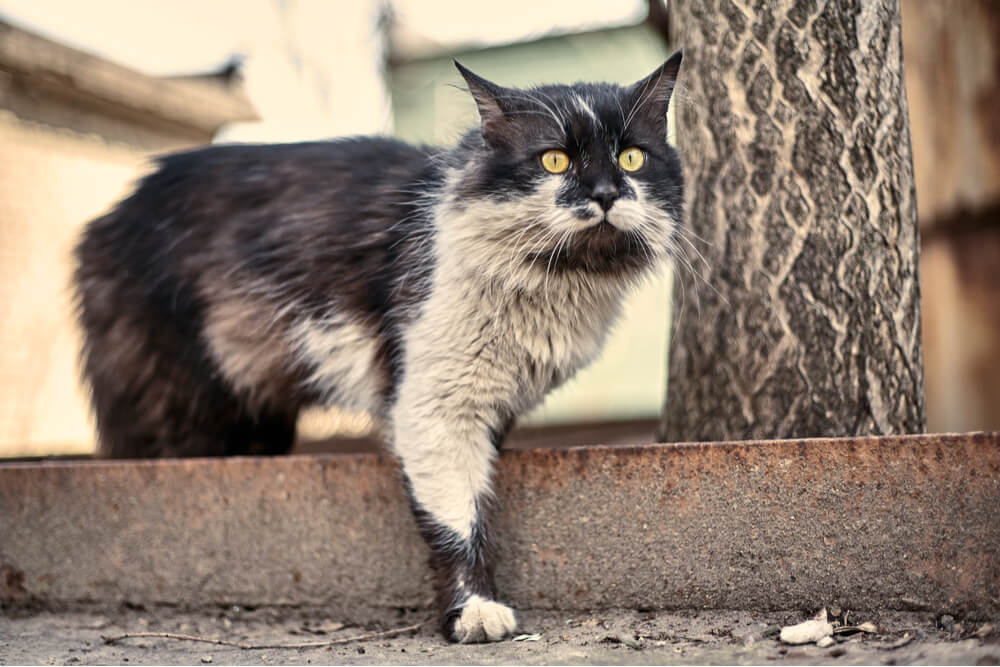
Most cats only need to be bathed when they’ve come into contact with substances they can’t safely lick off of their bodies.
Healthy cats are typically fastidious groomers. If your cat stops grooming, that is a sign that something is causing your cat to stop their daily hygiene routine, such as pain, nausea, or stress. Even obesity can interfere with a cat’s ability to groom properly and can lead to matting or other haircoat issues.
In addition, if your cat has greasy fur with excessive dandruff that could be a sign that your cat isn’t grooming properly or it could be a sign of a skin condition called seborrhea, which can be treated.
10. Your Cat Makes Funny Faces When Eating
You’ve likely seen the videos on social media where a cat is fed something, often cold, and after taking a lick or two makes the most hilarious face.
While we humans laugh at this, the cat doesn’t think it is very funny because the funny face is due to a painful or sensitive tooth.
Feline odontoclastic resorptive lesions, FORLs for short, are dental issues in cats that are similar to cavities in humans, except they aren’t caused by bacteria. We don’t know the exact cause of FORLs, but we do know that the condition eats away at teeth, exposing the pulp cavity and causing pain and inflammation.
So when you see a cat make a funny face after eating something (usually cold) it is because that cat is in PAIN and needs to see a vet.
So there you go! Now you know the most common subtle signs of sickness in cats, and hopefully, this information will help you care for your cat better and help your cat live longer and healthier.
